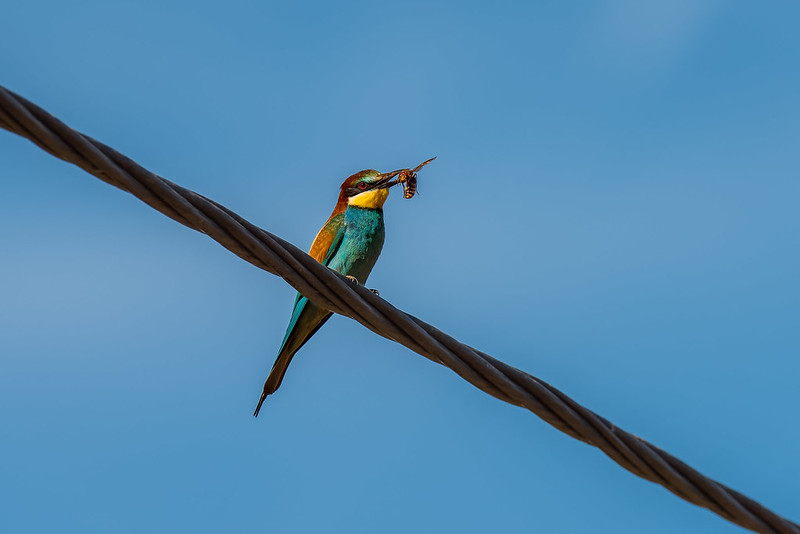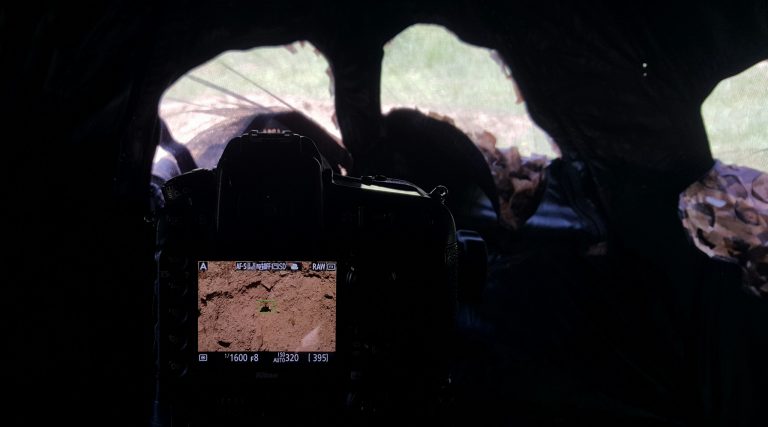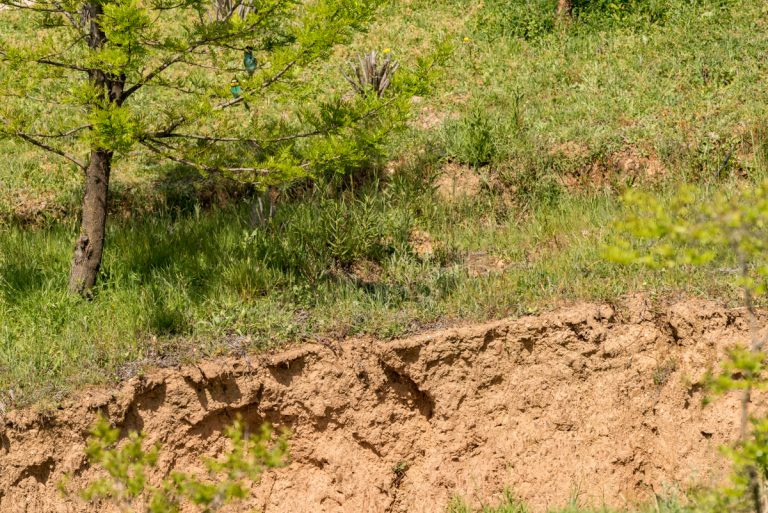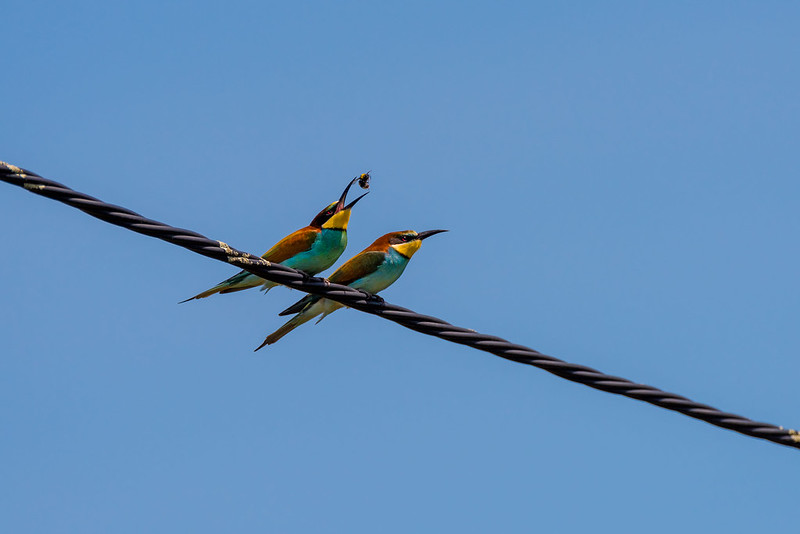There has been no activity at the “hole” for a few days and it seems as though the Bee Eaters gave up building there. Possibly due to the ground being quite hard. This morning, I was up before the sun and thought I’d go and hide myself in an area they seemed to like to catch their food near the river that flows through our land.
To my surprise, I stumbled across their new nesting site and the earth seems a lot softer. The crazy thing is, it’s in a bank which is only there due to a public dirt track that cuts through to cross the river.
Not many vehicles use it, but it is a way through to some of the houses on the other side of the river. I hid myself away under my bag hide and waited.
Once the sun was up, the Bee Eaters came and spent about 2 hours catching food. The males living up to their reputation for giving anything large to their female partners to eat. Eventually, after a 2 and half hour wait, they started to come down to the nest sites to continue their excavation work.
There was some thick cloud cover this morning so the light wasn’t the greatest, but I was determined to just sit and watch and snap some pictures, albeit not with an ideal exposure.
Here is one of a male (I think, due to the yellow shoulders) at it’s nest hole.
{Click image(s) to view on
Flickr - opens in new tab}

It’s not really viable to leave my pop-up hide in this location, so I’m going to knock up a temporary small wooden hide I can place here, watch this space!




